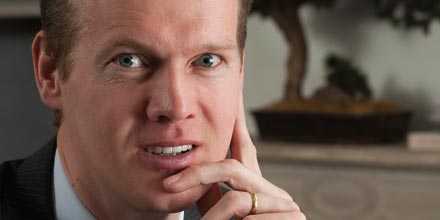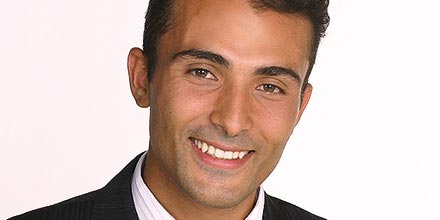Selectors reveal top absolute return fund picks – by Citywire
Appetite for absolute return funds is increasing so how are fund selectors meeting this demand and are they happy with the performance in this space?
Daniel Aymerich Biota, Banco Inversis
Asset managers are finding the absolute return concept is a valuable tool allied with their commercial strategies during periods of market turmoil. In theory, it helps to align the interests of investors wishing for attractive, risk controlled returns with the fund management firms’ need for more complex products with higher commission structures in times when investors tend to fly to liquidity.

The reality has proved to be very different especially when investors’ expectations haven’t been met, as many absolute return funds have suffered heavy losses in difficult markets.
We need to help investors understand that absolute return doesn’t mean positive returns at all times and that managers need to take some risks in order to capture the market upside. Investors are increasingly demanding products with an absolute return philosophy, but at the same time are becoming impatient with bad performing funds that promise too much and are too complex to understand.
Managers and advisers should highlight the risks and describe the scenarios for potential losses associated with these funds so investors’ expectations are more realistic. There are nevertheless a few funds available to the retail market we favour including M&G Optimal Income and Invesco Balanced-Risk Allocation.
Guy Janssens, BNP Paribas Fortis
We are increasingly focused on absolute return funds, but the meaning of ‘absolute return’ has changed in the last couple of years. In the past absolute return funds tried to generate positive returns in all markets. After 2008 we discovered this was not always possible.
Today, absolute return funds are low volatility funds which try to protect themselves in down markets with derivatives such as futures and put options. A lot of long-only funds are also using derivatives for temporary hedges.

For example,Carmignac Patrimoine, one of the biggest and most well-known mixed funds, is using futures to hedge its positions. This approach has enabled it to outperform the classic long-only funds which can’t protect themselves.
In the category of defensive funds JPM Capital Preservation is doing a great job in these volatile markets. This fund can have a maximum net equity exposure of 30%. The fund has long/short positions in equities and bonds and has Ucits III status. The short positions are working very well in negative markets, resulting in a positive performance year-to-date.
Sometimes equity funds decrease their market exposure by using shorts. For example Fidelity Active Strategy can use 30% shorts which generate alpha in down markets. The difference between a typical hedge fund and a long-only fund is disappearing. A lot of hedge fund strategies are being used in classical Ucits III long-only funds. Retail and private banking clients can profit from this evolution as these funds are open to the wider public.
Arnaud Scarpaci, Agilis Gestion
Investor interest in absolute return is growing because risk aversion has risen strongly over the last three years since the sub-prime crisis in the US and the debt burden in eurozone. Investors have sought to gain returns and cap their volatility which has boosted the popularity of flexible funds and VAR mutual funds.

Absolute return mutual funds have delivered a range of returns during the crisis since there are several asset classes including global macro, convertible arbitrage, merger arbitrage, long/short, trend following, bear market and volatility. Those which have succeeded have come from the latter two categories. The others have dropped like long-only mutual funds.
Absolute return mutual funds I monitor include: Elan France Indice Bear, BNP Paribas Long Vol and CCR Centrale Long Vol.
Benjamin Bente Vates Invest
Funds of funds usually have a long bias because they allocate mainly into long-biased funds. We are focused on the behaviour of our target funds during periods of market stress. Therefore, performance in 2008 or August 2011 is a key selection criterion for us.

We combine an index futures overlay, based on behavioural finance and run by ourselves, with a mix of long-bias funds, a significant number of short-bias funds and really uncorrelated funds, measured by their performance during times of crisis.
A good example for those true absolute return funds is the constant volatility fund AC Risk Parity 7 (2008 +9%, August 2011 +0.7%). Another interesting group are funds with behavioural finance strategies: Sentix Fonds 1 was able to generate positive returns during the crises and M4 Alpha Bonds is one of our calls for the next crisis.
Comments
Leave a Reply
You must be logged in to post a comment.